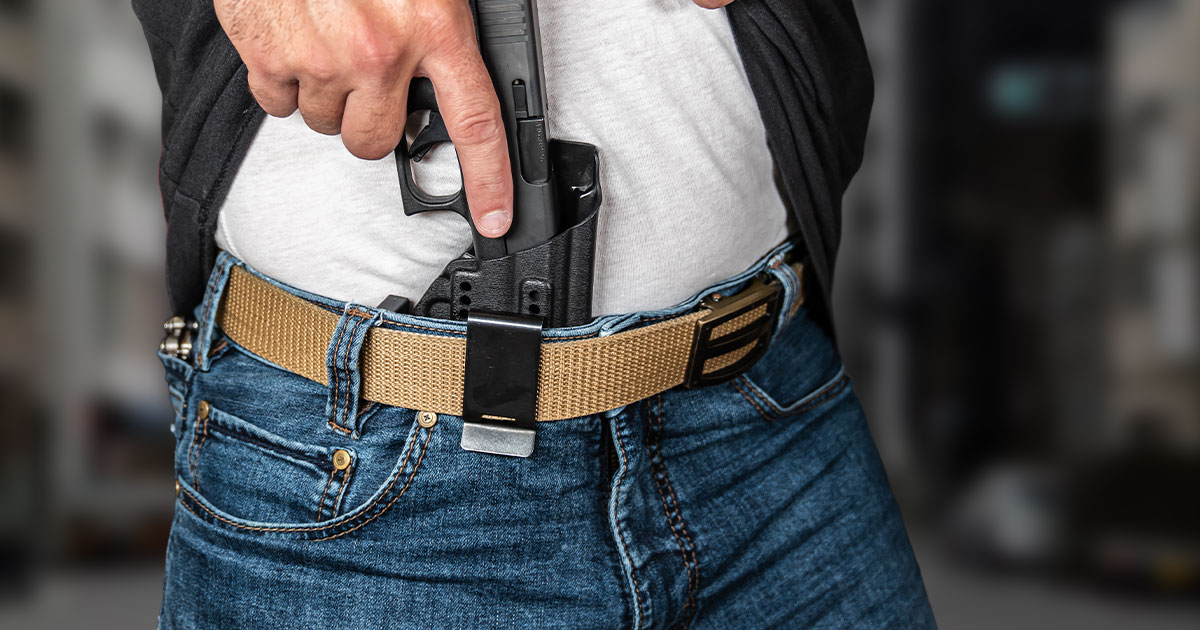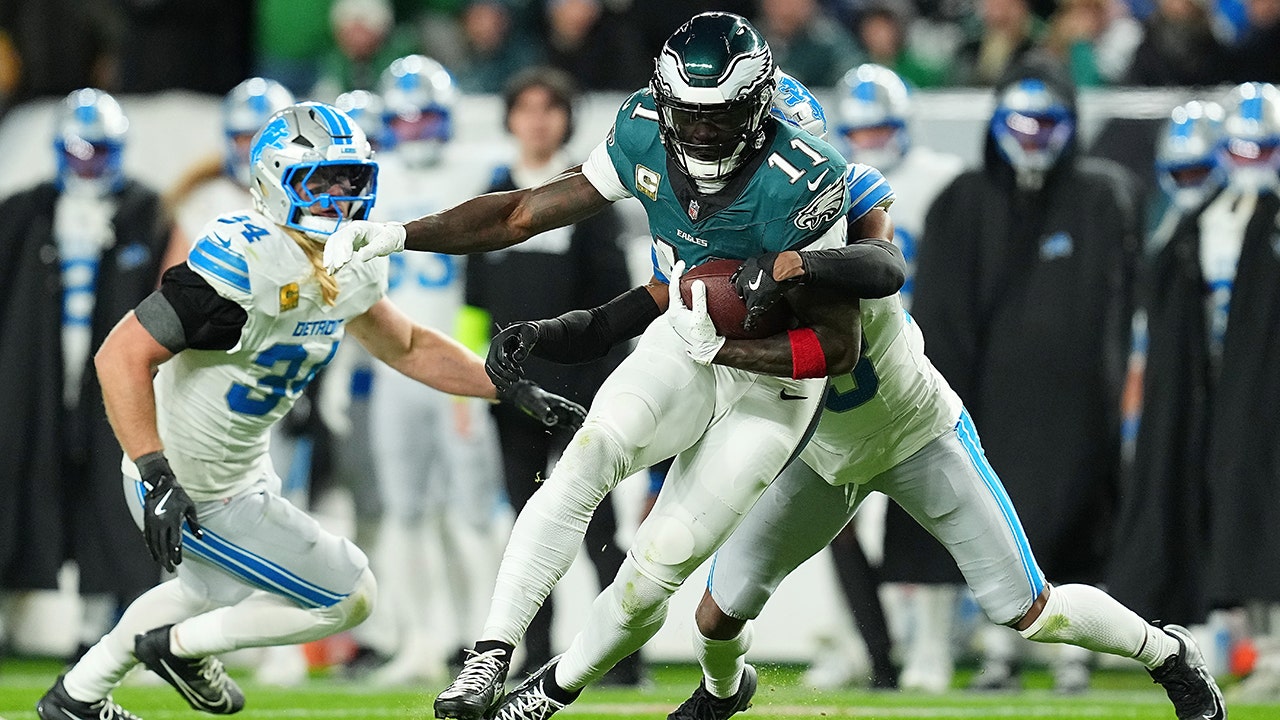What is Brandishing a Firearm?

Several terms come into play when discussing carrying a firearm for self-defense. Some are reasonably clear, like concealed carry versus open carry, although even those can become confusing when some states consider a gun as open carry if the bearer’s cover garment rides up enough for someone to see it. In general, however, the differences between concealed and open carry are straightforward. The definition of “loaded” is another term that can vary from state to state. For example, Utah only considers a semiauto firearm loaded if there is a live round physically in the chamber, while California considers a semiauto firearm loaded if there is a loaded magazine inserted, even without a round in the chamber. Still, both definitions are clear enough based on how the law is written. The same cannot be said about the definition of brandishing. Whether someone is brandishing a firearm is often subjective and depends on the perception of the person observing the gun owner, as well as the judgment of law enforcement. The topic warrants a closer look.
This is the point where I make the usual disclaimer that I am not an attorney, and this article is not legal advice. This is a discussion to raise awareness of a topic that affects us all in the concealed carry community. It is up to you to know and understand your state’s laws and seek legal advice from an attorney should the need arise.
How Does the Law Define Brandishing?
In general, most people consider brandishing either pointing a gun at someone or waving it around in a threatening manner. Of course, laws vary from state to state. For example:
Under California Penal Code Section 417, brandishing is defined as a: “…person who, except in self-defense, in the presence of any other person, draws or exhibits any firearm, whether loaded or unloaded, in a rude, angry, or threatening manner, or who in any manner, unlawfully uses a firearm in any fight or quarrel…”
Virginia code § 18.2-282 reads: “It shall be unlawful for any person to point, hold or brandish any firearm…in such manner as to reasonably induce fear in the mind of another or hold a firearm or any air or gas operated weapon in a public place in such a manner as to reasonably induce fear in the mind of another of being shot or injured. However, this section shall not apply to any person engaged in excusable or justifiable self-defense.”
Utah law does not specifically use the term “brandishing,” but by Utah Code section 76-10-506 except when it is in self-defense, the crime of threatening with or using a dangerous weapon in a fight or quarrel is committed when a person, “in the presence of two or more persons, draws or exhibits a dangerous weapon in an angry and threatening manner or unlawfully uses a dangerous weapon in a fight or quarrel.”
Let’s look at some of the nuances in these laws.
Virginia law says the weapon must be pointed or brandished ” in such manner as to reasonably induce fear in the mind of another.” In other words, to make the person fear that they will be shot. This seems like a reasonable distinction and would fall under the classification of threatening behavior. On the other hand, California includes the word “rude” by saying “a rude, angry, or threatening manner.” Rude could mean a lot of different things to different people and would be open to considerable interpretation.
Utah and California both include the words “draw” and “exhibit” in their laws regarding brandishing or threatening. Does exhibit include someone seeing the gun in a holster and feeling threatened, even if the bearer does not draw it? Virginia muddies the water even further by including the word “hold” in its statute. What does that even mean?
Most people consider the act of brandishing to require being in the presence of other people. Virginia includes the wording “in the mind of another” and “in a public place”, California says “in the presence of any other person”, but Utah specifies that it must be “in the presence of two or more persons.” One Utah attorney weighed in on that by saying that if it is just a confrontation between two people with no one else present, the person accused of threatening behavior cannot be convicted, but I don’t think I would like to test that interpretation.
None of these could be considered cut-and-dry situations.
How Does Brandishing Differ from Open Carry?
The term that makes the difference in brandishing vs open carry is a threatening manner. As long as you are compliant with state and local laws, just walking around with a handgun in an IWB holster or shoulder holster is unlikely to be considered brandishing. This isn’t to say that some snowflake might not see your gun and feel threatened simply because you are in the same building as them and create a stir, but any subsequent interaction with law enforcement would probably come out alright. However, there is another nuance to the open carry situation. Should you get into a dispute with someone while openly carrying a gun, it could result in a sticky situation. Drawing attention to your gun while arguing, or even having someone perceive that you are, could be considered acting in a threatening manner. As always, when you are carrying a gun, it is wise to avoid confrontations of any kind, even if you feel you are in the right.
When Can You Display a Firearm
There are times when you can legally display a firearm, but there are more times when you cannot legally do so.
Self-Defense
Every state law I researched for this article included words to the effect, “except in self-defense,” under the definition of brandishing. Your gun should not leave its holster unless you are prepared to use it. Some states have the term “defensive display” in their code. This means that you were in a self-defense scenario and drew your gun with the specific intention of deterring an assailant. Not all states have this provision, and even in those that do, it carries the same requirement of imminent bodily harm as any self-defense situation, and you will have to prove that. While you may be able to resolve whatever is going on without firing a shot, you should never draw your gun simply to intimidate someone.
Defense of Another
Being a good Samaritan and coming to the defense of another person carries the same requirement that you believe the victim is in immediate danger of death or grievous injury. Many states add the additional requirement that you are reasonably certain that the person you perceive to be the victim was not the initial aggressor. Even if you are certain, once again, simply drawing to intimidate is not a good plan. If the perceived perpetrator is dangerous to the point that you believe they are going to kill or cripple the victim, and you cannot stop them without using deadly force, we’re back to leaving you gun in the holster unless you are prepared to use it.
Defense of Property
This one is simple; you cannot threaten a person with a gun in defense of property because, in most places, it is not legal to use deadly force in defense of property. That includes drawing and brandishing. If you are confronting trespassers or thieves outside your home, such as in your yard or burglarizing your car, you may feel the need to take a gun with you to protect yourself in the event they attempt to use deadly force against you. In that case, you should not point or wave the gun aggressively. In many jurisdictions, displaying a gun as a threat of deadly force is the same as using deadly force. Personally, I don’t think it is wise to leave your house if you have intruders outside, but if I did go out, I would certainly be armed, but keep the gun in the holster. For all you know, the act of pointing or brandishing a gun might cause the other person to feel threatened and start shooting.
A Grey Area
The bottom line of this discussion is that brandishing is a grey area. The best rule of thumb, to me at least, is to keep your gun concealed and in the holster unless you believe you are in immediate danger of death or grievous bodily harm. And if that is the situation, you should be drawing it to do something besides just waving it around.
Read the full article here









